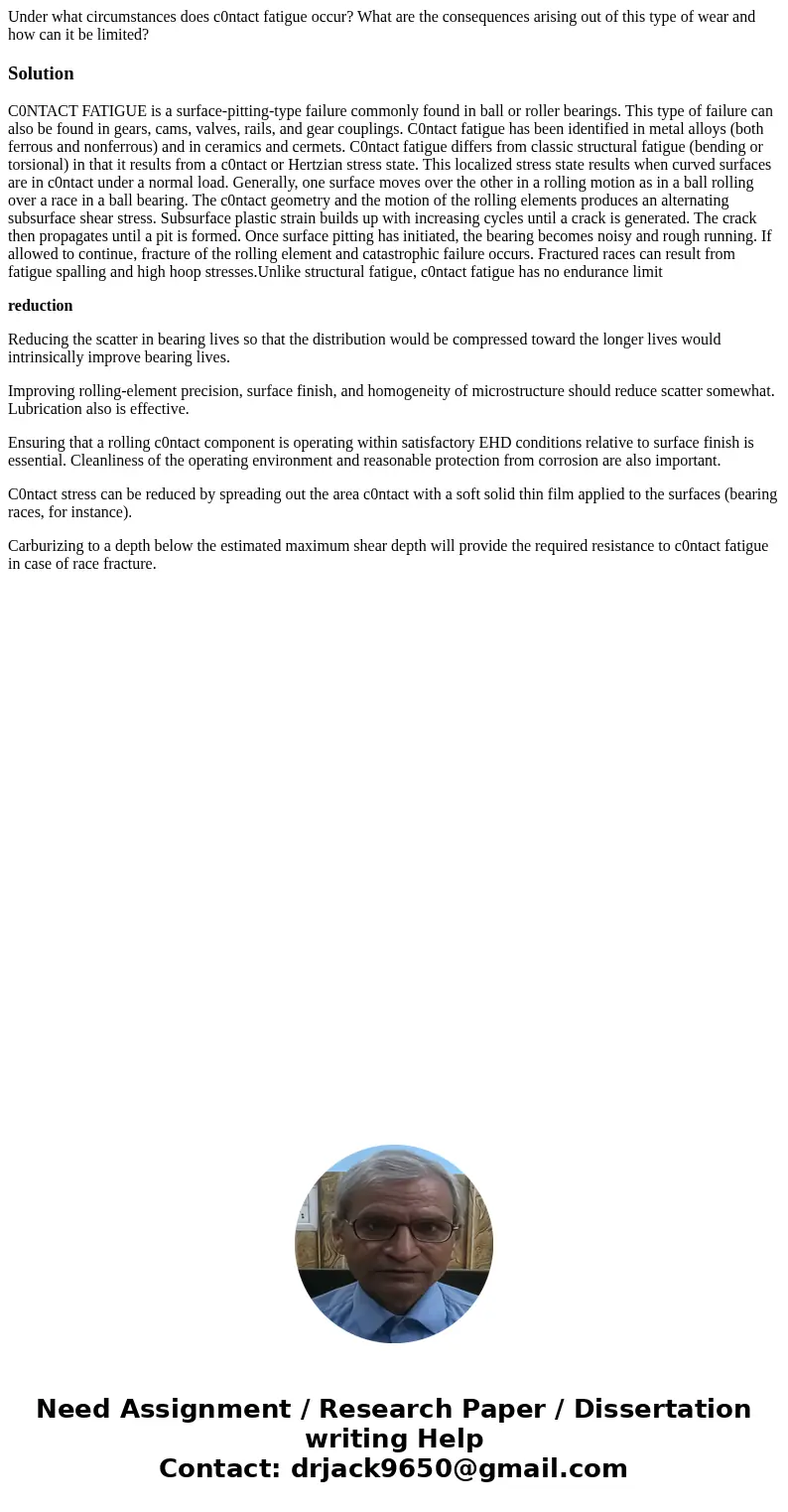Under what circumstances does c0ntact fatigue occur What are
Under what circumstances does c0ntact fatigue occur? What are the consequences arising out of this type of wear and how can it be limited?
Solution
C0NTACT FATIGUE is a surface-pitting-type failure commonly found in ball or roller bearings. This type of failure can also be found in gears, cams, valves, rails, and gear couplings. C0ntact fatigue has been identified in metal alloys (both ferrous and nonferrous) and in ceramics and cermets. C0ntact fatigue differs from classic structural fatigue (bending or torsional) in that it results from a c0ntact or Hertzian stress state. This localized stress state results when curved surfaces are in c0ntact under a normal load. Generally, one surface moves over the other in a rolling motion as in a ball rolling over a race in a ball bearing. The c0ntact geometry and the motion of the rolling elements produces an alternating subsurface shear stress. Subsurface plastic strain builds up with increasing cycles until a crack is generated. The crack then propagates until a pit is formed. Once surface pitting has initiated, the bearing becomes noisy and rough running. If allowed to continue, fracture of the rolling element and catastrophic failure occurs. Fractured races can result from fatigue spalling and high hoop stresses.Unlike structural fatigue, c0ntact fatigue has no endurance limit
reduction
Reducing the scatter in bearing lives so that the distribution would be compressed toward the longer lives would intrinsically improve bearing lives.
Improving rolling-element precision, surface finish, and homogeneity of microstructure should reduce scatter somewhat. Lubrication also is effective.
Ensuring that a rolling c0ntact component is operating within satisfactory EHD conditions relative to surface finish is essential. Cleanliness of the operating environment and reasonable protection from corrosion are also important.
C0ntact stress can be reduced by spreading out the area c0ntact with a soft solid thin film applied to the surfaces (bearing races, for instance).
Carburizing to a depth below the estimated maximum shear depth will provide the required resistance to c0ntact fatigue in case of race fracture.

 Homework Sourse
Homework Sourse